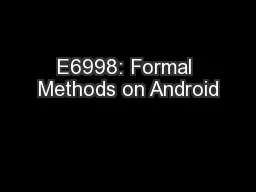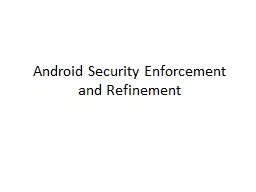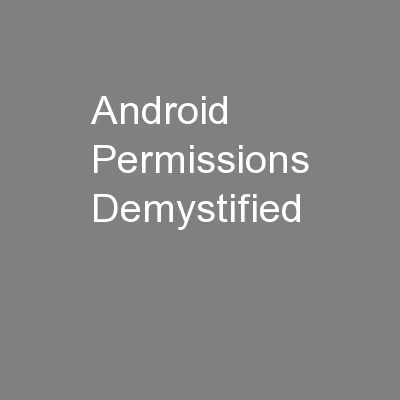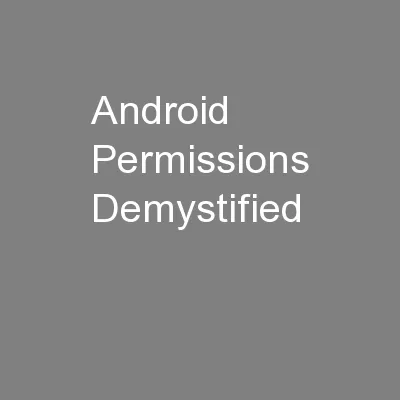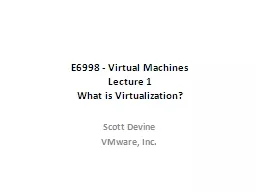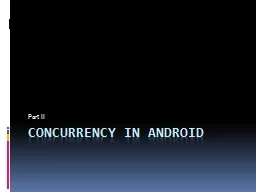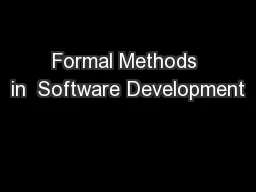PPT-E6998: Formal Methods on Android
Author : cheryl-pisano | Published Date : 2015-11-15
Instructor Professor Aho Student Suzanna Schmeelk October 2014 Suzanna Schmeelk October 27 2014 Bertrand Meyers C A R Hoare Android 44 KitKat O utline Formal Methods
Presentation Embed Code
Download Presentation
Download Presentation The PPT/PDF document "E6998: Formal Methods on Android" is the property of its rightful owner. Permission is granted to download and print the materials on this website for personal, non-commercial use only, and to display it on your personal computer provided you do not modify the materials and that you retain all copyright notices contained in the materials. By downloading content from our website, you accept the terms of this agreement.
E6998: Formal Methods on Android: Transcript
Download Rules Of Document
"E6998: Formal Methods on Android"The content belongs to its owner. You may download and print it for personal use, without modification, and keep all copyright notices. By downloading, you agree to these terms.
Related Documents

